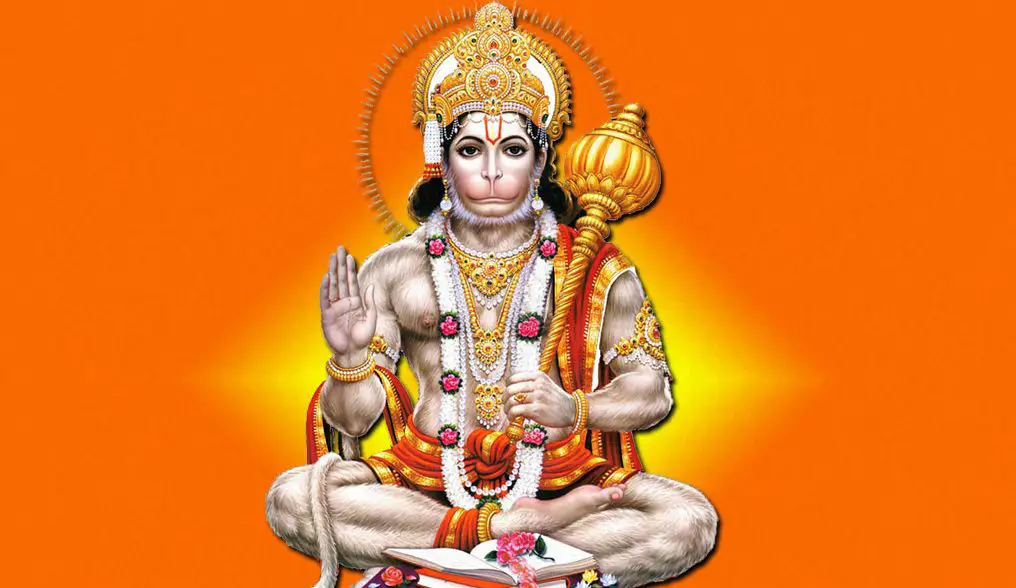Only the wise know humility. Wise people realize that the more one knows, the more one is yet to know. Without humility, there is no learning or growth.
In the Ramayana epic, Lord Hanuman epitomizes humility. He possessed many ‘siddhis’ or powers, and nothing was impossible for him.
But he had to be reminded of his powers at various stages, as he was not conscious of his own strength and abilities. He was so completely immersed in ‘Rama bhakti’, or devotion to Lord Rama. It was his humility that allowed him to become a great devotee of Rama. Humility helps one to go beyond ego and experience the truth.
Hanuman’s Hidden Powers
In the Ramayana, Sugriva tells Hanuman that he is the best person to go to Lanka as a messenger and look for Sita. A group of monkeys under their leader, Angadha, was deputed to go south. They gathered on the Mahendra mountain but had no idea how to cross the ocean. Jambhavan, the bear, was aware of Hanuman’s birth and his powers, as well as the curse he was under. This curse was the reason why he had forgotten his innate abilities.
Realising that he had to invoke the latent powers in Hanuman, he urged him to undertake this important and seemingly impossible task. He reminded him that as Vayu’s son, he could travel at the speed of the wind. After listening to these motivational words, Hanuman became more confident and willed himself to assume a huge size so that he would be strong enough to cross the (100-yojana-long) ocean.
Hanuman initially visualized it in his mind, as he knew that the mind had a role in making one’s efforts successful. The chapter Sundara Kanda in the Ramayana describes Hanuman’s strength, prowess, fame, intelligence, greatness, etc. He served the divine couple, Rama and Sita, with complete devotion. This was a rare privilege. But despite all this, Hanuman always remains humble. He understands that their grace is behind all his attainments. Before crossing the ocean, he pays obeisance to the Sun, Wind, Indra, and Brahma so that he can achieve success in the duty he has been entrusted with.
Hanuman, the Brahma Gyani
Hanuman was also a Brahma Gyani. The story goes that when Rama met him for the first time, he realized that Hanuman was a very learned being. Lord Rama asked him to describe himself. Hanuman replied that with reference to his body by birth, he was a Das or a servant of Lord Rama. With respect to Jeev, he was part of the whole (Paramatma), and in terms of atma, he was the same as Rama. Such was his knowledge and wisdom.
Tulsidas, who wrote a version of the Ramayana, describes Hanuman as Mahavir because he was Dharamveer, Gyanveer, Dayaveer, Daanveer, and Ranveer, all rolled into one. But such attributes do not make Hanuman egotistical. He remains humble at all times.
Lord Hanuman has a persona that shines like gold. Across his body is a thread made of grass. It has three threads which are tied with a knot at one end. The three threads symbolize the three Gunas – Saatvik, Rajasic, and Tamasic, which all of us have. The knot is a symbol of Brahmagyan, the ultimate goal of all human beings. Our hair represents our endless and innumerable desires. But in Hanuman’s case, his hairs are all curled inwards. This indicates that he has no desire for himself and also that all his senses are tuned inwards and sublimated.
Humility, devotion, and surrender – these are the things we can learn from the life of Lord Hanuman. With all his incredible powers, he was happy to remain the humble servant of Lord Rama.
Hanuman Jayanthi
Lord Hanuman’s birthday is celebrated by Hindus as Hanuman Jayanthi. By worshipping him on this day, we can invoke his blessings and protection.
How to Celebrate Hanuman Jayanthi
It is said that Hanuman will not accept prayers if one does not pray to Lord Rama first. His dedication and loyalty to Rama are worth emulating.
As Lord Hanuman was born at the time of sunrise, the Pooja begins at dawn on Hanuman Jayanti. People visit Hanuman temples early in the morning.
Now, let us see how people celebrate the birthday of Lord Hanuman.
- Devotees perform Sankalpam to invoke his blessings.
- Fire ritual and Havan are performed.
- People also observe fast and do meditation.
- Hanuman Jayanti is an auspicious day for wrestlers and bodybuilders. They fast from morning till night on this day. Villages conduct bodybuilding and wrestling competitions.
- Before doing the Pooja, clean the Pooja area and sprinkle holy water on it. Then put a clean cloth. Install Hanuman’s idol.
- Apply sindoor on the idol with the ring finger.
- Offer 5 flowers and leaves of calotropis (ruee) or in multiples of five.
- Light 2 Kewda, Chameli (Jasmine), and Ambar incense sticks. Wave the incense sticks thrice, in a clockwise direction, in a full circle.
- Circumambulate the idol 5 times or in multiples of five.
- After the rituals are completed, Prasad and food are distributed.
- Acts of charity and mediation are performed to please Hanuman and Rama.
- This day is very auspicious for starting a new job. Anything started in the name of Hanuman brings good results.
- People chant the Hanuman Chalisa and Sankat Mochan Ashtakare, as well as other Mantras, for Hanuman.
You can also celebrate Hanuman Jayanti by doing a simple Hanuman Aarti and chanting the Hanuman Chalisa and Hanuman aarti for an entire day.






